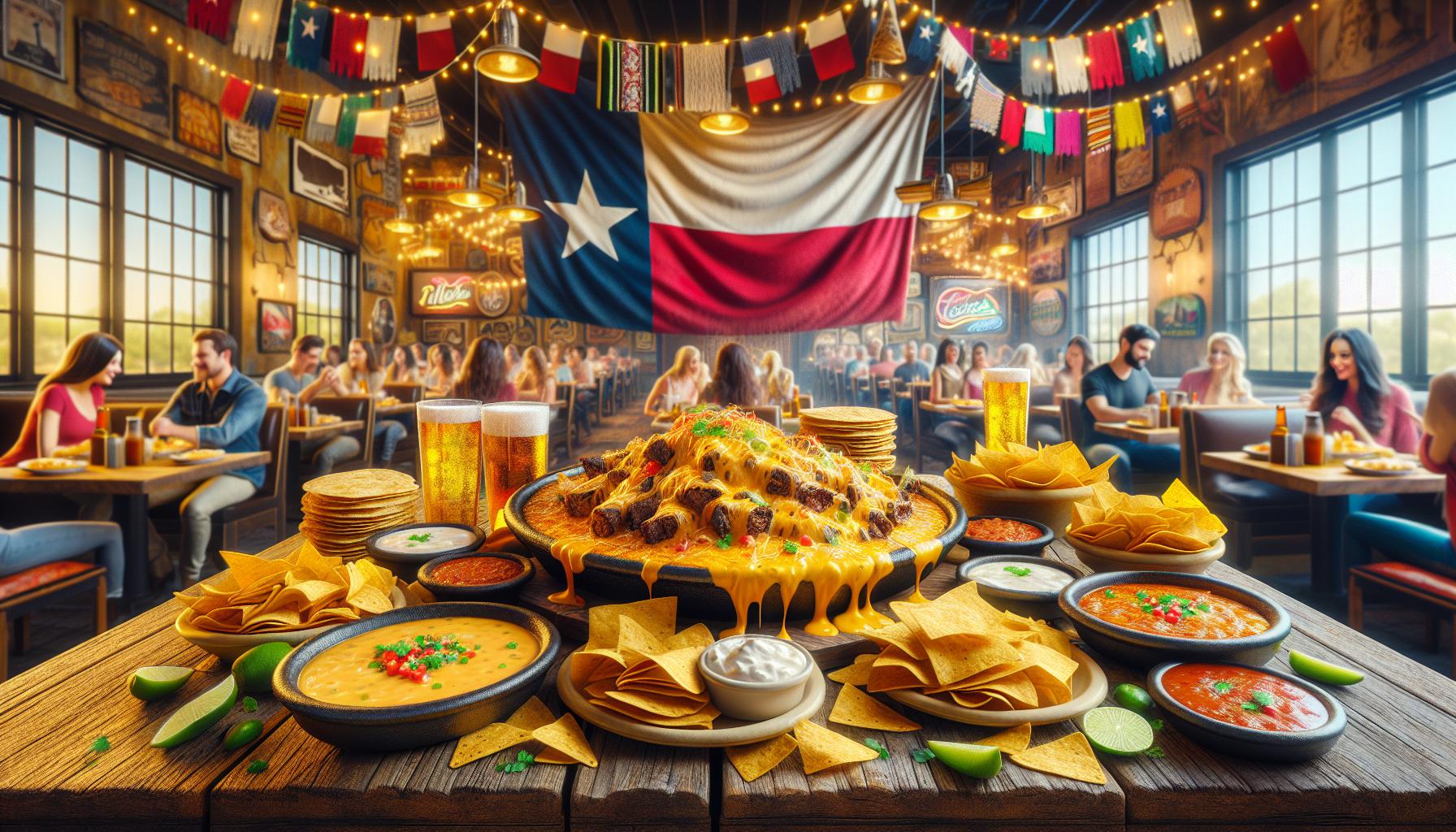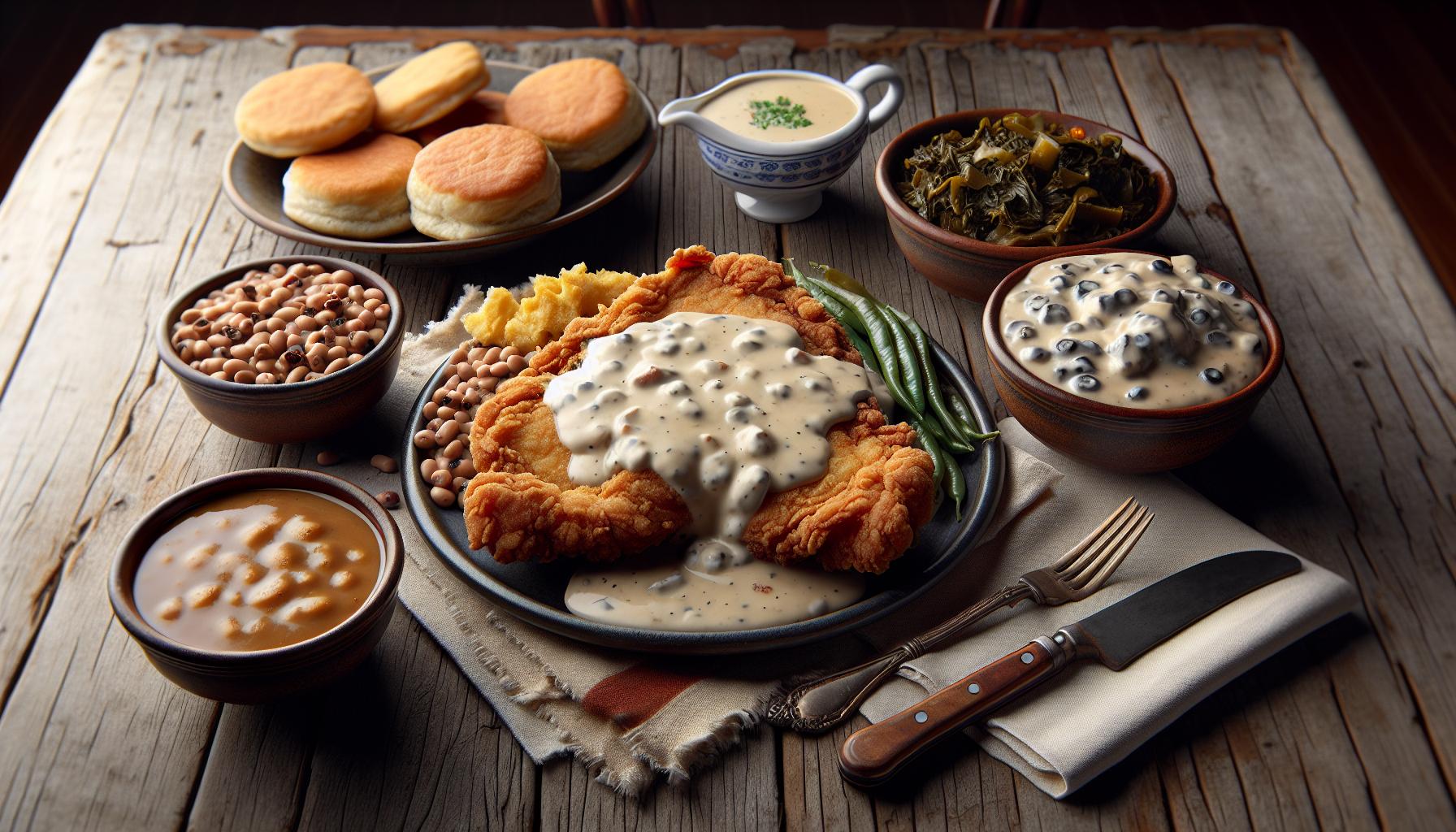When it comes to Texas Culture Food, everything’s bigger, bolder, and packed with more flavor than a rodeo after-party. From smoky BBQ joints that’ll make your taste buds do the two-step to Tex-Mex creations that blend south-of-the-border zest with Lone Star attitude, Texas cuisine is a delicious reflection of the state’s diverse heritage.
The Lone Star State’s culinary landscape tells a story that’s as wide and varied as its endless horizons. It’s where chicken fried steak meets authentic street tacos, and where generations-old BBQ recipes are passed down like precious family heirlooms. Whether it’s the mouth-watering brisket that’s been smoking since dawn or the fiery salsa that’ll put hair on your chest, Texas food culture isn’t just about eating – it’s about celebrating a way of life.
Texas Culture Food
Texas Culture Food emerged from diverse influences spanning centuries of settlement patterns migrations civilizations. The state’s culinary heritage represents a fusion of techniques ingredients traditions from multiple cultures.
Native American and Mexican Influences
Native American tribes established the foundation of Texas Culture Food cuisine through their agricultural practices farming methods. The Karankawa Coahuiltecan Caddo tribes cultivated corn beans squash which became staple ingredients in regional dishes. Mexican settlers introduced essential cooking techniques like grinding corn for masa tortilla-making smoking meats. The integration of chili peppers cilantro cumin transformed local cooking creating signature dishes such as chili con carne tamales. These indigenous Mexican influences shaped the bold spicy flavors that characterize modern Texas cuisine.
European Settler Contributions
European settlers brought distinctive cooking methods preserved food traditions to Texas Culture Food in the 1800s. German Czech immigrants established meat-smoking techniques created unique sausage recipes introduced kolaches pastries to central Texas. Polish settlers contributed their expertise in meat preservation smoking methods while Czech bakeries popularized sweet savory pastries. The German population in cities like New Braunfels Fredericksburg introduced beer brewing traditions schnitzel preparation methods which evolved into chicken fried steak. These European influences combined with local ingredients created distinctive Texas German Czech culinary traditions that remain popular today.
Iconic Texas BBQ Traditions

Texas Culture Food BBQ stands as a cornerstone of the state’s culinary identity, characterized by slow-smoked meats and distinct regional variations. The art of Texas barbecue reflects generations of expertise passed down through families and communities.
Regional BBQ Styles
Central Texas Culture Food BBQ emphasizes beef brisket with minimal seasoning, letting oak smoke enhance the meat’s natural flavors. East Texas specializes in tender chopped beef sandwiches with tomato-based sauces. South Texas features Barbacoa, traditionally prepared from beef heads wrapped in agave leaves. West Texas employs direct-heat cooking over mesquite coals, creating a distinctive charred flavor profile. Each region maintains unique traditions:
- Central: Salt pepper rubs on beef cuts cooked over post oak
- East: Sweet tangy sauces on pulled pork shoulder
- South: Hispanic-influenced methods using underground pits
- West: Cowboy-style grilling with intense mesquite smoke
Essential Smoking Techniques
Texas pitmasters employ specific smoking methods to achieve signature results. The temperature control ranges from 225°F to 250°F for optimal results. Key techniques include:
- Smoke ring development through proper airflow management
- Fat rendering achieved by cooking at consistent temperatures
- Bark formation using precise dry rub applications
- Moisture retention through strategic water pan placement
- Wood selection matching specific meat cuts
| Cut of Meat | Smoking Temperature | Cooking Duration |
|---|---|---|
| Brisket | 225°F | 12-18 hours |
| Pork Ribs | 235°F | 5-6 hours |
| Beef Ribs | 250°F | 8-10 hours |
Tex-Mex: Where Mexico Meets Texas

Texas Culture Food cuisine represents the unique fusion of Mexican culinary traditions with Texas ingredients and cooking methods. This distinctive style emerged from border town communities, creating a new category of comfort food that’s become synonymous with Texas dining culture.
Classic Tex-Mex Dishes
Tex-Mex restaurants serve signature dishes that combine Mexican cooking techniques with Texas-sized portions and local ingredients. Cheese enchiladas smothered in chili con carne showcase the cuisine’s hearty nature. Fajitas, introduced by Mexican vaqueros, feature grilled skirt steak served on sizzling platters with flour tortillas. Nachos topped with yellow cheese, refried beans, guacamole serve as a Tex-Mex staple. Queso dip, made with processed cheese creates a smooth, creamy texture distinct from traditional Mexican quesos. Chile con queso pairs with thick tortilla chips for a quintessential Tex-Mex appetizer.
The Evolution of Tex-Mex Cuisine
Tex-Mex cuisine originated in San Antonio during the 1880s through Mexican immigrant restaurants adapting recipes to local tastes. Texas ingredients like beef, yellow cheese processed flour tortillas transformed traditional Mexican dishes. The cuisine gained widespread recognition in the 1970s when food writers distinguished it from authentic Mexican food. Modern Tex-Mex incorporates innovative elements such as smoked brisket tacos breakfast tacos loaded with eggs chorizo. Regional variations appear across Texas cities with Houston embracing Gulf seafood San Antonio maintaining traditional flavors Austin adding contemporary twists to classic dishes.
Southern Comfort Foods in Texas

Southern comfort cuisine stands as a cornerstone of Texas dining culture, offering hearty portions that reflect traditional family recipes passed down through generations. The dishes blend southern cooking techniques with Texas-sized portions to create memorable meals.
Texas-Style Chicken Fried Steak
Texas-style chicken fried steak features tenderized beef cutlets coated in seasoned flour breading deep-fried to golden perfection. Local diners serve this iconic dish smothered in cream gravy sprinkled with cracked black pepper. The preparation involves double-dipping the meat in buttermilk and flour mixture to create a crispy exterior while maintaining a juicy interior. Texans commonly pair this dish with mashed potatoes to soak up the signature white gravy. The portion sizes typically cover the entire plate, measuring 8-10 inches in diameter. Restaurants across the state compete for recognition through specific variations, such as jalapeno-infused gravy or specialized breading techniques.
Home-Style Side Dishes
Texas Culture Food home-style sides complement main courses with rich flavors. Black-eyed peas simmered with bacon showcase a staple legume dating back to early settler days. Cream corn combines fresh kernels with butter cream sauce topped with black pepper. Collard greens cook slowly with smoked ham hocks until tender. Mac and cheese features sharp cheddar blended with pepper jack for a Texas twist. Green beans almondine adds crunch with toasted nuts pan-fried in butter. Sweet potato casserole topped with pecans brings sweetness to savory meals. Hand-rolled buttermilk biscuits come brushed with melted butter straight from cast iron skillets.
Modern Texas Food Scene
Texas’s contemporary culinary landscape combines traditional flavors with innovative cooking techniques. The state’s food scene embraces both time-honored recipes and creative interpretations of classic dishes.
Food Festivals and Events
The Houston Livestock Show & Rodeo Barbecue Cook-off attracts 250+ competitive teams annually, serving over 250,000 attendees. Austin’s Hot Sauce Festival showcases 350 different varieties of hot sauces each August, drawing 15,000 spice enthusiasts. The State Fair of Texas features unique deep-fried creations, including deep-fried butter butter crispy bacon cinnamon rolls. San Antonio’s Fiesta celebration spans 11 days with 100+ events centered around local cuisine traditions.
| Festival | Attendees | Features |
|---|---|---|
| Houston BBQ Cook-off | 250,000+ | 250+ teams |
| Austin Hot Sauce | 15,000 | 350 sauces |
| State Fair of Texas | 2.5M | 75+ fried foods |
Contemporary Texas Restaurants
Modern Texas restaurants blend global influences with local ingredients. Franklin Barbecue in Austin serves 2,000 pounds of brisket daily, earning national recognition from food critics. Uchi in Houston transforms traditional sushi with Gulf Coast ingredients. Cattleack BBQ in Dallas introduces Korean BBQ fusion dishes alongside classic Texas smoked meats. Suerte in Austin reimagines Mexican cuisine using heirloom corn varieties from Texas farms.
| Restaurant | Location | Specialty |
|---|---|---|
| Franklin BBQ | Austin | Brisket |
| Uchi | Houston | Gulf Coast Sushi |
| Cattleack | Dallas | Korean BBQ Fusion |
| Suerte | Austin | Heirloom Corn |
Texas food culture stands as a testament to the state’s rich heritage and diverse influences. From slow-smoked BBQ to innovative Tex-Mex creations the Lone Star State’s cuisine continues to evolve while honoring its deep-rooted traditions. This dynamic culinary landscape showcases not just delicious food but also the warm hospitality and community spirit that defines Texas.
The state’s food scene perfectly balances preservation of traditional cooking methods with modern culinary innovation. As Texas moves forward its distinctive flavors and cooking traditions will undoubtedly continue to influence and inspire food lovers worldwide while maintaining their authentic Texan charm.



